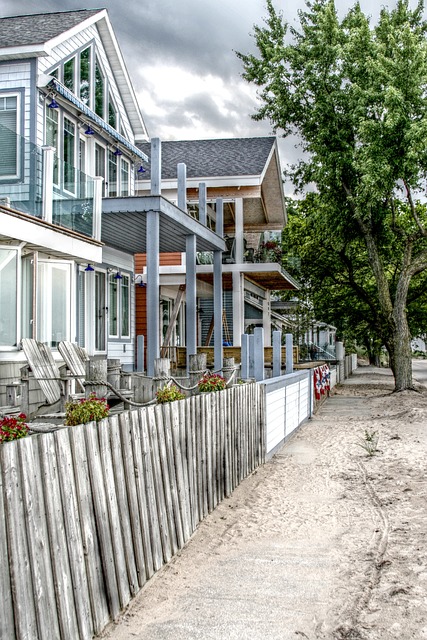
Owning a beachfront home is a dream for many, offering stunning views, the sound of waves, and direct access to the beach. However, the unique atmospheric conditions of coastal environments can significantly impact the durability and maintenance of your property. Understanding these effects is crucial to preserving the beauty and value of your home.
Salt Air and Corrosion
One of the most significant atmospheric challenges for beachfront homes is salt air. The ocean breeze carries fine salt particles, which can settle on various surfaces and materials. Salt is highly corrosive, especially to metals. Over time, this can lead to rust and deterioration of metal fixtures, railings, and even structural components if not properly maintained. Regular inspection and maintenance, such as applying protective coatings and promptly addressing any signs of rust, are essential to mitigate this effect.
Moisture and Humidity
Beachfront homes are exposed to high levels of moisture and humidity. This constant exposure can lead to several issues, including wood rot, mold, and mildew. Wooden structures, such as decks and siding, are particularly vulnerable. Ensuring proper ventilation, using treated or rot-resistant wood, and regularly sealing and painting wooden surfaces can help protect against moisture damage. Additionally, installing dehumidifiers and maintaining an efficient HVAC system can reduce indoor humidity levels.
Wind and Storms
Coastal areas are prone to strong winds and storms, which can cause significant wear and tear on a beachfront home. High winds can lift and damage roofing materials, break windows, and cause structural damage. Investing in storm-resistant windows and doors, as well as reinforced roofing systems, can provide better protection. Regularly inspecting and securing loose items around your property can also prevent damage during windy conditions.
UV Radiation
The sun’s ultraviolet (UV) rays are more intense near the coast, leading to faster degradation of exterior materials. Prolonged exposure to UV radiation can cause paint to fade, wood to crack, and plastics to become brittle. Using UV-resistant materials, applying protective coatings, and choosing lighter paint colors can help mitigate these effects. Regularly refreshing the exterior finishes will also maintain the appearance and integrity of your home.
Airborne Sand and Abrasion
Airborne sand can be abrasive, causing wear on windows, doors, and exterior surfaces. This constant abrasion can dull finishes and scratch glass. Installing sand-resistant screens, using tougher materials for high-exposure areas, and keeping surfaces clean can reduce the impact of airborne sand.
Conclusion
While a beachfront home offers unparalleled beauty and relaxation, it also requires diligent maintenance and protection against the unique atmospheric conditions of the coast. Regular inspections, preventive measures, and timely repairs are key to preserving your property’s condition and value. Embrace the coastal lifestyle, but be prepared to invest the necessary effort to keep your beachfront home in top shape.

Recent Comments